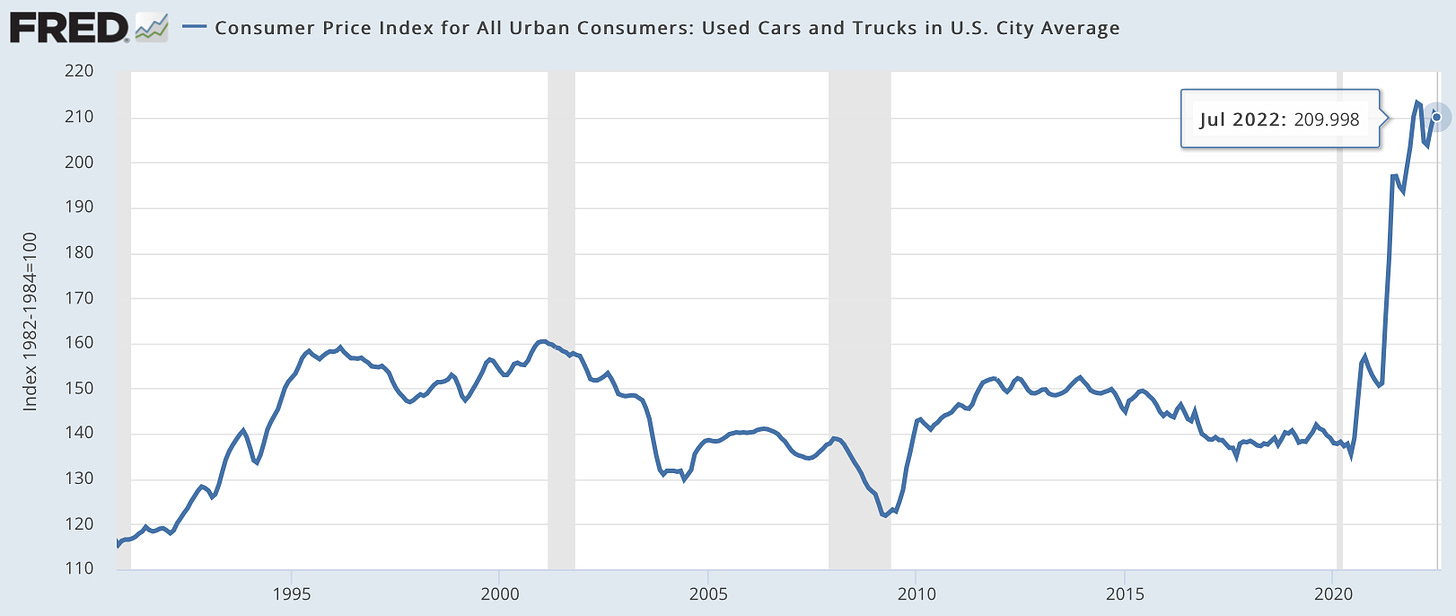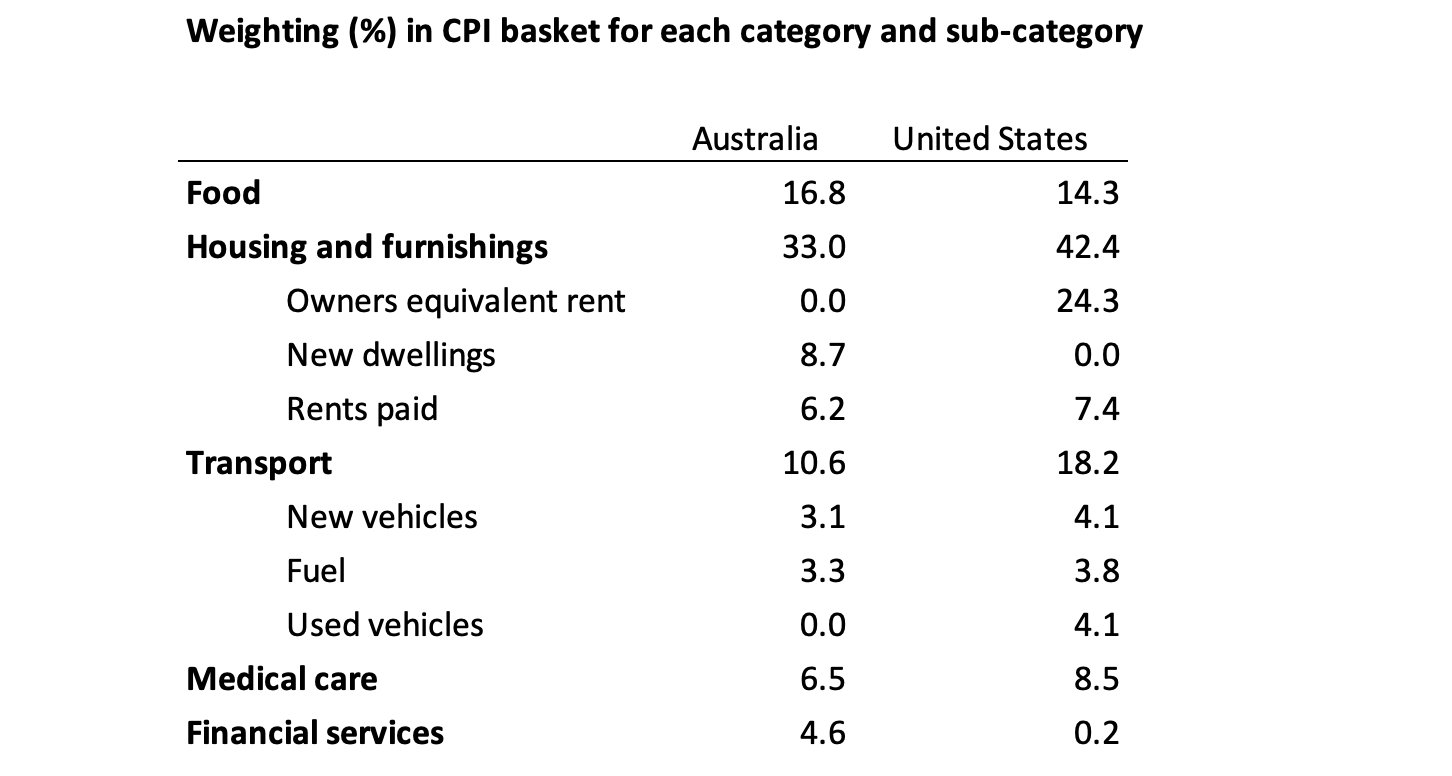Why did used cars lead to inflation in the US but not Australia? How important are housing rents to inflation? Answering these questions means unpicking inflation measurement.
A recent episode of the Odd Lots podcast with inflation analyst Omair Sharif prompted this substack post. Enjoy that podcast here.
One thing that has puzzled me during this global inflation wave is the lack of attention to how consumer price indexes (CPIs) differ between countries. This really matters if you want to make sense of what is happening.
For example, in the United States, the price of used cars pushed up their CPI over the past year or two. See the Used Cars and Trucks price index rip higher through 2020-21 in the chart below. It is up 50% in a couple of years. With a 5% weighting in the CPI calculation, the price of used cars alone has led to a 2.5% point increase in the overall CPI since 2020.

The price of used cars in Australia boomed by similar amounts. However, the effect on Australia’s CPI was exactly zero.
That’s because used cars are not included in Australia’s CPI.
This is just one of the important differences between inflation metrics between the two countries. In the table below I’ve summarised some of the weights that are applied to each sub-index to create the overall weighted-average CPI measure in Australia and the United States.

Notice anything?
Yes, used cars get zero weight in Australia.
But more than that, there is a massive category called Owners equivalent rent that gets a 24% weight in the United States CPI for urban consumers but zero in Australia’s CPI.1
In Australia, we only include the cost of new housing construction to represent the price of housing for owner occupiers, the New dwellings sub-category. This gets an 8.7% weight in the CPI and the price represents the construction contract price for new house builds.
In the United States, they capture the price of owning your own home by assuming you pay yourself the market rent. Hence, they scale up the market rents paid by renters and apply them to every owner-occupied household.
So when rental prices rise, as they have been recently in both countries, this price change is weighted at 31.5% in the United States (the sum of the renter and owner-occupied rents) but is weighted at only 6.2% in Australia’s CPI (to represent payments by renter household only).
The 10% increase in rental prices seen in the United States since 2020 increased their CPI by 3.2%, but the same rental price change would increase Australia’s overall CPI by only 0.6%.
This different treatment of housing in the two CPIs also means that the 20% increase in new home construction prices since 2020 increased Australia’s overall CPI by 1.7% but had no effect on CPI in the United States.
Another quirk is that Australia’s CPI includes a large 4.6% weight for financial services, which include bank fees, stockbroker fees, real estate transaction costs and bank margins.
To me, this is a weird one. Financial services seem to be more like intermediate goods rather than consumption goods. The inclusion of these items happened in 2005 with the 15th series revision of the CPI. The Australian Bureau of Statistics (ABS) notes how it is unique in its approach to including these items in the CPI.

So what?
Knowing how important different components are to the overall CPI helps to understand why the same inflation pressures will lead to different measured inflation in different places. Rising rents have less effect on Australia’s CPI, and the price of used cars has no effect at all. Yet much of the inflation debate in the United States concerns these two goods. While they affect households in exactly the same way, these inflation pressures are expressed differently in the inflation metrics of each country.
Dr Cameron Murray is co-author of the Book Game of Mates. Subscribe to his written work at Fresheconomicthinking.substack.com.